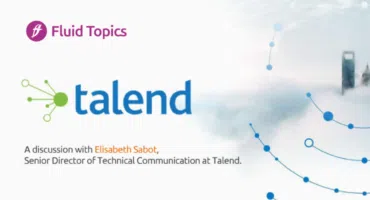A larger client base can challenge a business organization. In the case of swissQprint, the impact of their growing installation base had led to an explosion in service costs. The company needed to find a scalable solution that would allow them to maintain service levels up to the Swiss company’s standards while bringing costs under control. swissQprint rapidly identified that enabling self-service support was key to unlocking their growth and decided to implement a documentation portal to support not only their own services, but also their partners and customers. They were proved right almost immediately as support tickets dropped by 34% in the first month alone.

We sat down with swissQprint’s Technical Communication Leader
Johannes Müller to find out how they got there and what is happening next.
What did customer service look like at swissQprint before implementing the documentation portal?
We offer a wide range of products, flatbed and roll-to-roll printers, with various options and configurations. We used to provide product documentation in the form of large PDF documents, essentially one for every type of machine, and also for every individual configuration of that machine. The information was there somewhere but finding it was tough, even for experienced technicians or users. First, they needed to find the document, then find the answer to their question in a 500-page PDF.
So, as a consequence, people would call for help instead of reading the document. With a growing customer base and an expanding network of resellers and partners, our support calls were increasing and the cost of delivering this support was going to spin out of control. We needed to find a scalable solution to support our growth.
In a nutshell
The challenges
- Explosion of service costs as the installed base is growing
- Lack of efficiency in knowledge transfer to the service partners
- Bottlenecks in providing the latest updates on products and procedures
The results
- A knowledge service available 24/7 for employees, partners and customers
- A self-service portal seamlessly connected with the freshest product information
- An immediate decrease of 34% in support tickets
Tell me about this solution – what were you looking for?
We needed to operate a real business transformation, moving from a culture of “call for solution” to one of “information self-service”.
Technically, we were looking to implement a self-service documentation portal: a central place where technicians and customers could search for and find what they needed to operate and maintain installations efficiently.
There are several options and technologies on the market to power portals. But referring to technical content, it couldn’t be just any web portal. It had to handle the specificities of technical documentation, in particular the complexity of formats, sources, life cycles, and more. The search capabilities, given the diversity and volume of information to provide, were also critical and needed to be up to the Internet search experience that everyone is so used to these days.
We made our decision to go with Fluid Topics pretty quickly. Beyond the documentation portal that it powers, it is a fully featured Content Delivery Platform designed for technical content that opens up even more opportunities than what we were expecting.
What type of technical content do you publish on the portal?
All types: those long service manuals could be added to the documentation portal, sure, but also operating manuals, manufacturing documentation, service films, tips and tricks, and flow charts for troubleshooting.
In fact, we set out to add as much of our technical documentation as we could. Our goal was to make this a robust portal with easy-to-access answers to any of the questions users or partners might have.
Where does this tech content come from? How is it produced, and how is it structured?
We could have fed the PDF manuals directly into Fluid Topics but, in the process of transforming our technical communications, we decided to work on improving the quality of our technical documentation and our writing processes too. So, as well as implementing Fluid Topics for the Content Delivery part, we transferred to a new way of creating and assembling our technical content.
We moved to DITA and introduced DITAToo, a Component Content Management System that brought us all the benefits of structured authoring and automation of content production. It saves us time and money thanks to content reuse and the reduction of translation costs, but the automation provided by DITAToo also allows to create the flow charts that are displayed to technicians and customers, a much more efficient way to guide users, as compared to the long text descriptions they are generated from. And the format is served perfectly to the technicians and customers through Fluid Topics.
About swissQprint

swissQprint is an independent joint-stock company based in Kriessern, Switzerland. The company is a world leader in the development and manufacture of high-end digital printing systems used by professionals to apply lettering and artwork onto a wide variety of surfaces.
swissQprint serves a global customer base along with a vast network of specialist dealers and service partners. With a client base including some of the world’s biggest companies, swissQprint has a long history of success in industries as varied as aerospace, photography, packaging, signage, and interior decoration.
So, it means that the solutions, CCMS and Content Delivery Platform, are integrated?
Yes, totally. Combining DITAToo and Fluid Topics meant we could create, update and publish technical content at a pace that fits with product changes and upgrades. If there was new information to publish, we could do that without worrying about reformatting a PDF manual.
With a CCMS and Fluid Topics we could move to daily publishing, and this meant that the latest information was always available on the documentation portal. Fluid Topics has a connector for DITAToo that means as soon as the content is written it can be on the documentation hub and in front of the people that need it.
The other thing about our adoption of a CCMS was that it improved the documentation portal experience. The granularity of structured content means that search results in the portal are even more precise: Fluid Topics fully indexes and searches PDFs very efficiently, but with structured content, the Fluid Topics search and reading capabilities get even enhanced by the granularity of the content. The combination of DITAToo and Fluid Topics was a clear win for us.
« Our support calls were increasing and the cost of delivering this support was going to spin out of control »
How long did it take for the swissQprint to begin seeing the results of this shift?
We saw the impact almost immediately. In the first month after launching the self-service technical documentation portal we saw a drop in the number of service tickets of 34%! The adoption by our partners, resellers, and users of the self-service portal was rapid, and technicians were eager to have access to an alternative to a phone-centered help desk.
Based on the successful roll-out and rapid adoption of the portal, we’re planning to add more content. We want to our entire product range to be supported via the portal, and we aim to expand the coverage to spare parts too.
Quick facts
Large-format Printers
Swiss Manufacturing
Global Customer Base
Strong Partner Network
What’s the next step for swissQprint and the self-service portal?
Well, there’s really no limit here.
The tech doc optimization process has already enabled some critical improvements to the Service organization. We could build up a dedicated documentation team and restructure the mixed activities into a field service and a training department, leading to important efficiency gains at all levels.
One of these benefits is in training and enablement. A technical documentation hub is perfect for knowledge transfer, in fact, and it offers real opportunities for onboarding and training new field service technicians for our machines. We intend to take advantage of this training potential, too, for our teams as well as for partners.
Now that the portal is up and running, our technical documentation has become a real enabler for our company growth!
« With Fluid Topics, we could move to daily publishing, meaning that the latest information is always available on the documentation portal »




